It’s been more than 35 years since Ridley Scott’s neo-noir sci-fi ‘Blade Runner’ (1982) released. Since then, it has gone on to become one of the greatest sci-fi films ever made. What made it so special? Brilliant cinematography, a beautiful soundtrack composed by the great Vangelis himself, great acting, engaging dialogue, and just like any good sci-film, it leaves us pondering over many questions. This is not the film one can get and appreciate on just one viewing i.e., it requires multiple viewings to really understand what the film is trying to tell us. Unfortunately, the film was a box office bomb, barely able to break-even at the box office.
But over the years, cinephiles all over the world gave the film re-watch and then really came to understand how good the film truly is. Its depiction of a dystopian future was spot-on, and the film really made all the viewers question the larger picture of life: What defines humanity? It throws other questions at us like was Deckard a replicant? Well, for many years there were talks about a sequel but it never really materialized. Considering the fact that Hollywood has the habit of making unnecessary sequels to classic films which were never even needed in the first place, it was in best interests for the film to not have a sequel. The most important aspect goal of any sequel is to spoil its predecessor’s legacy. Which is why it took so many years for its sequel even to materialize because special care had to be taken to ensure this film is as good if not better than its prequel.
Enter: Denis Villeneuve. The Canadian filmmaker who has in recent years consistently made some terrific films like ‘Incendies’ (2010), ‘Prisoners’ (2013), ‘Enemy’ (2013), ‘Sicario’ (2015) and ‘Arrival’ (2016), agreed to direct the sequel. When the trailer of ‘Blade Runner: 2049’ (2017) arrived, we were all amazed by how good and promising it looked. All the fans who watched the first film couldn’t wait to see how its sequel would continue to tell the story in the Blade Runner Universe. When Blade Runner 2049 finally released, it received good reviews due to its lavish cinematography by the legendary Roger Deakins, the wonderful soundtrack, its well depiction of a dystopian future and its thought-provoking themes. But sadly, it too didn’t really fare well at the Box Office, grossing just roughly around $260 million on a budget of around $150-175 million. Anyway, enough chit-chat about this! Let’s get to what the movie is all about.
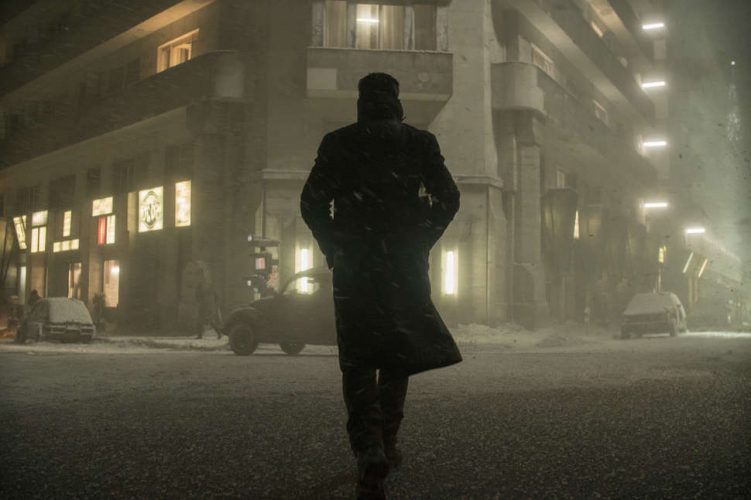
Before watching this film, it is to be noted that there are about three short films uploaded on YouTube which have set up the Blade Runner Universe for this movie. In the first short film Blade Runner Blackout 2022, which is an anime, a blackout occurs in the year 2022 after an operation carried out by a rogue replicant of detonating a nuclear warhead in Los Angeles, thereby triggering an electromagnetic pulse that erases all the Tyrell Corporation’s database of registered replicants.
In the second short film 2036: Nexus Dawn, we’re introduced to Niander Wallace (Jared Leto), an industrialist who presents a new Nexus-9 replicant to lawmakers with the intention of having a prohibition on replicants being lifted. In the last short film 2048: Nowhere to Run, we’re shown Sapper Morton (Dave Bautista) as he saves a mother and her daughter from thugs. All of these films are essential to watch as they play a pivotal part in setting up the events following the prequel and leading up to the sequel.
The Plot
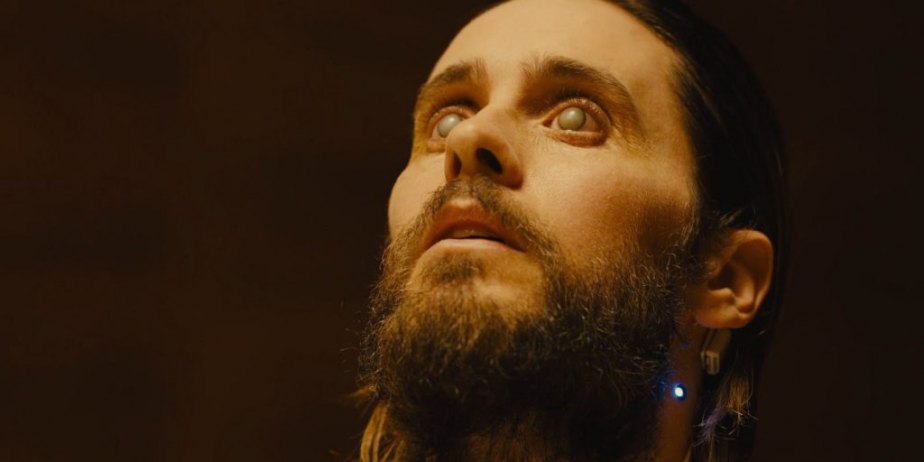
To clarify some things first: What is a “replicant”? Well, they’re bioengineered humans, designed by the Tyrell Corporation for use in the off-world. Their enhanced strength makes them ideal for slave labor. After a series of violent uprisings by the replicants, the blackout happened, thereby wiping out all records stored electronically. The manufacture of the replicants became prohibited and the Tyrell Corporation went bankrupt. Following the collapse of ecosystems in the mid 2020s, it led to the rise of Industrialist Niander Wallace whose mastery of synthetic farming averted the famine. Wallace acquired the remains of the Tyrell Corporation and created a new line of replicants – Nexus-9’s who never fail to obey. As a result, many older model replicants who managed to survive are hunted down and “retired” i.e, executed by the so called “Blade Runners”.
We’re introduced to K (Ryan Gosling) a blade runner whose job is to retire the old model replicants. He uncovers a secret that threatens to instigate a war between humans and replicants. Basically, this film introduces us to the concept of “replicant reproduction”, where K and the LAPD suspect that the replicant Rachel (from the prequel) was pregnant and gave birth to the first replicant child reproduced to human sexual reproduction, after discovering her remains being buried by Sapper Morton almost thirty years ago. The question remains: where is this replicant child? K goes on a pursuit looking for the child, and his discovery leads him to question his own existence whether he really is a replicant or could it be that he himself is the missing replicant child, after he discovers that a dream of his being implanted had actually happened.
His discovery leads to the ruins of Las Vegas where he discovers that Rick Deckard (Harrison Ford) is hiding and is indeed the father of that replicant child. Deckard explains that he had to be separated from the child as it was not safe for the child and that he left his kid in the custody of the Replicant Freedom Movement. Shortly, K and Deckard are attacked by Wallace’s go-to lady Luv (Sylvia Hoeks) who kidnaps Deckard and leaves K severely injured. K is rescued by the Replicant Freedom Movement who explains that he is not the replicant child and that K deduces that Dr Ana Stelline, the replicant memory-maker is the one that he was looking for. The Replicant Freedom Movement want K to kill Deckard to prevent him from leading Wallace to Dr Stelline or the movement. But K makes up his mind to save Deckard who while being transported to the off-world for torture to reveal his replicant child’s whereabouts, is ambushed by K. After a brief struggle with Luv, K manages to kill Luv but is severely wounded. K stages Deckard’s death to protect him from Wallace and the Replicant Freedom Movement and reunites him with his daughter Stelline in her office.
So what is the movie all about?
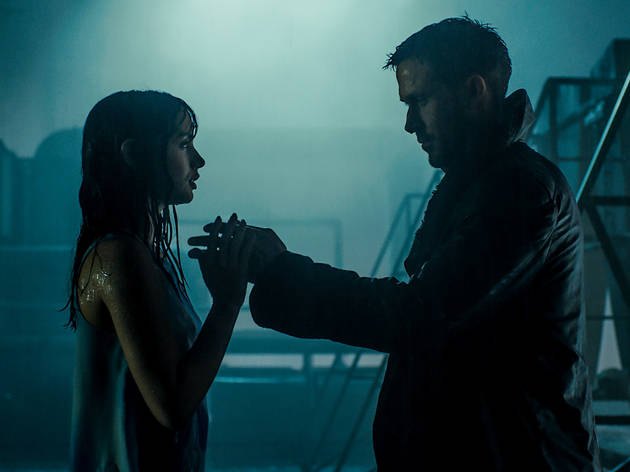
The whole movie is about K finding his humanity. As seen throughout the film, he is constantly belittled by everyone for being a replicant, i.e., he’s not real to anyone, even to himself. But deep down, he knows there’s something more, but because of his job and the world surrounding him, he won’t accept it. Which is why his holographic girlfriend Joi (played wonderfully by Ana de Armas) isn’t real either, he doesn’t think he deserves a real one, and he sees himself in her. But as soon as he begins to figure out that he may be actually the prophecy child, he begins to realize that he may be real. After he finds out that the implanted dream of his was real, he breaks down, realizing this whole time that he was right, what Joi told him was right and that he was special and that he has a soul. Because of this, he starts acting human; he goes against what he’s told. But after it’s revealed to him that he isn’t this child, he loses hope. The Replicant freedom movement wants him to kill Deckard and that he should revert to his old self which is following orders.
And we can see that as throughout the film, we notice that K is a loner, i.e., an introvert. Blade Runners are feared by most of the old model replicants as once their identity is known to the blade runners, they are most certainly likely to get “retired” by them. He gets a lot of hate in the form of insults directed at him by the others in the police force. This also explains why K might just be the only replicant blade runner in the LAPD since his superior Lieutenant Joshi (Robin Wright) is always seen orbiting around him. Those prostitutes sent by replicant freedom movement leader Freysa for getting some information from K, chicken out immediately after discovering that he is a blade runner. K hates the fact he constantly gets touched by prostitute Mariatte (Mackenzie Davis) and even gives him a threatening look to signal her that he is not comfortable with her touching him.
What’s the role of the Wooden Toy Horse here?
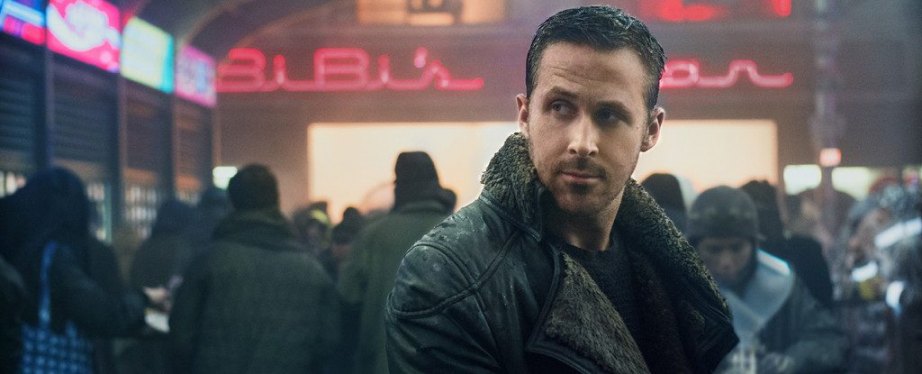
Gaff’s unicorn origami in the previous Blade Runner baffled all the viewers. The same is true for K’s wooden toy horse. The memory of a toy horse consumes k. In his memory, he recounts how he is bullied as a child as he’s playing with a small wooden toy horse, his only possession, and hides it from them in a little corner of a furnace. As an adult, K is often haunted by that horse, and even though he is aware that he is a replicant, his memory feels real.
Later, when he investigates and finds out that the horse is there, after all, he takes this as proof that he may be real after all, i.e., he may be part human. The horse represents K’s childhood which he could not have as a replicant. In short, it’s proof of his humanity. The horse, however, ends up as being a bit of a red herring, it turns out that the memory K holds up as proof of his humanity is not his, i.e., it is after all an implanted memory that belongs to Dr Ana Stelline. The memory was embedded into almost every replicant and not just Deckard as a safeguard in order to conceal Ana’s real identity as the daughter of Deckard and the replicant Rachel – her existence makes her the target of a potential replicant vs human war. The horse, therefore, is a symbol of humanity and not just that of K’s.
Dr Ana Stelline
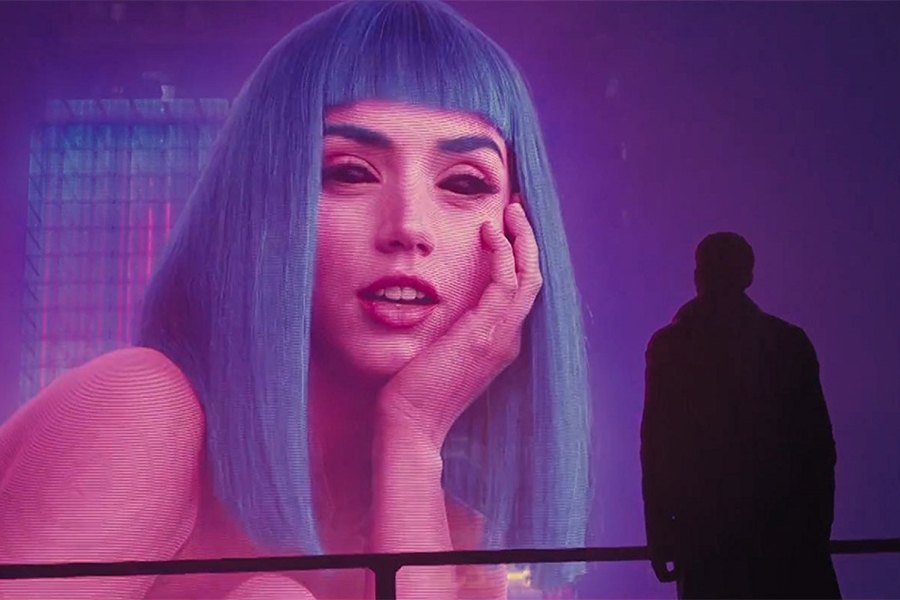
This film is haunted by Niander Wallace’s intentions, by dehumanization and by the ghosts of digital women. This is a world where an orphanage is found in the city’s waste processing district where the children are reduced to slave laborers. It is quite a dystopian hell for women as well but it forsees a future that belongs to them. Dr Ana Stelline is a woman, a revelation that subverts our story and gender expectations. And the miracle of Dr Stelline is not just the fact that she’s the first child born to a replicant but also lies in the fact that she has empathy. Living in a glass case at Stelline laboratory, she makes or rather manufactures memories for replicants, creating a spark of literal joy for any replicant who are bound to go through ordeals of slavery. Despite knowing that implanting real memories are illegal, she goes to such lengths of creating a memory as an act of love, an art form.
We’re initially told that Stelline suffers from a rare genetic disorder or a condition that left her with an immune system – so weak that any exposure to the outside world would kill her. Now, is this a smokescreen to keep her safe and out of the public eye? The fact that she spent her early childhood in a filthy orphanage would suggest so. But on the other hand, there’s no reason why “the genetic disorder” story couldn’t be true. Replicants have DNA and that DNA develops problems and degrade over time. That explains why the Nexus 6’s in the prequel had a four-year lifespan.
In the prequel, Tyrell explains why lengthening a replicant’s life may be futile as he says, “created a virus so lethal that the subject was dead before he left the table.” Trying to fix that would turn in turn “give rise to an error in replication so that the newly formed DNA strand carries a mutation and you’ve got a virus again.” The ending of the prequel implies that he managed to crack the ageing problem with Rachel. If so, she was a prototype and could have had unforeseen bugs of her disorder that she passed on to her daughter. One thing’s for certain: Stelline would have trouble leading a glorious robo-rebellion from behind her wall of glass.
Why Joi is important to the story?
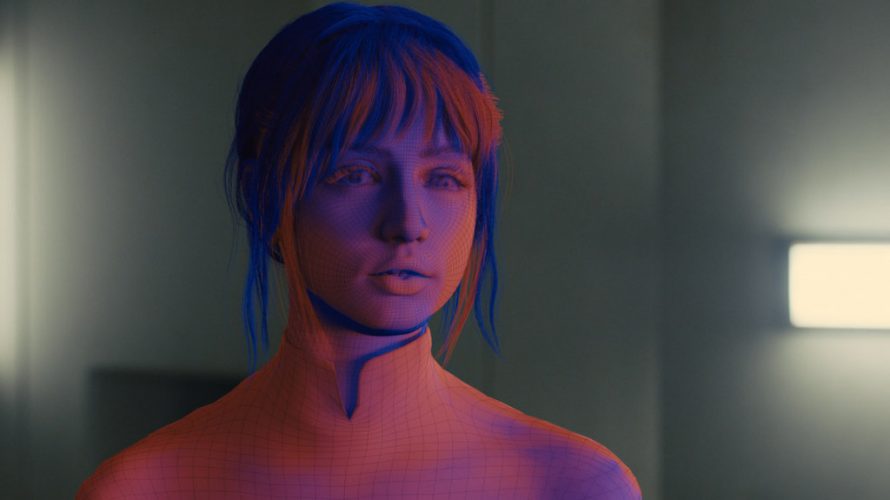
This film is haunted by Niander Wallace’s intentions, by dehumanisation and by the ghosts of digital women. This is a world where an orphanage is found in the city’s waste processing district where the children are reduced to slave labourers. It is quite a dystopian hell for women as well, but it foresees a future that belongs to them. Dr Ana Stelline is a woman, a revelation that subverts our story and gender expectations. And the miracle of Dr Stelline is not just the fact that she’s the first child born to a replicant but also lies in the fact that she has empathy. Living in a glass case at Stelline laboratory, she makes or rather manufactures memories for replicants, creating a spark of real joy for any replicant who are bound to go through ordeals of slavery. Despite knowing that implanting real memories are illegal, she goes to such lengths of creating a memory as an act of love, an art form.
We’re initially told that Stelline suffers from a rare genetic disorder or a condition that left her with an immune system – so weak that any exposure to the outside world would kill her. Now, is this a smokescreen to keep her safe and out of the public eye? The fact that she spent her early childhood in a filthy orphanage would suggest so. But on the other hand, there’s no reason why the “the genetic disorder” story couldn’t be true. Replicants have DNA, and that DNA develops problems and degrade over time. That explains why the Nexus 6’s in the prequel had a four-year lifespan.
In the prequel, Tyrell explains why lengthening a replicant’s life may be futile as he says, “created a virus so lethal that the subject was dead before he left the table.” Trying to fix that would turn in turn “give rise to an error in replication so that the newly formed DNA strand carries a mutation and you’ve got a virus again.” The ending of the prequel implies that he managed to crack the aging problem with Rachel. If so, she was a prototype and could have had unforeseen bugs of her disorder that she passed on to her daughter. One thing’s for certain: Stelline would have trouble leading a glorious robot-rebellion from behind her wall of glass.
What’s with the Baseline Test?
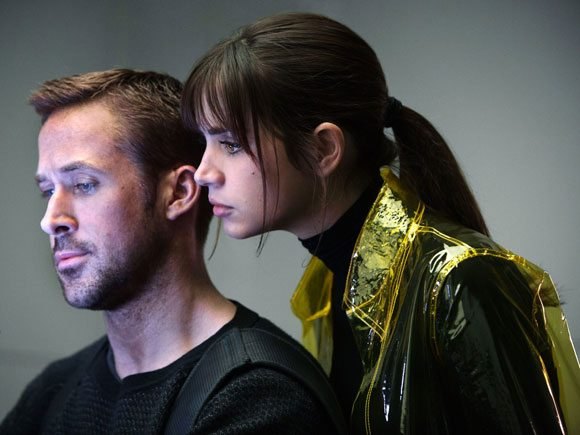
Just like how the Voight Kampff test was used in the prequel to detect whether one is a replicant by asking them personal questions so as to trigger an emotional response which they’re not capable of producing, similarly in this movie, the Baseline test is to ensure that the blade runner isn’t emotionally compromised while performing his duties.
During the test, we see how K has to repeat the lines as dictated like “…blood-back nothingness began to spin. A system of cells interlinked within cells interlinked within one stem. And dreadfully distinct against the dark, a tall white fountain played. ” Now you might wonder: what does this mean? These lines from the post-traumatic baseline test come from Vladimir Nabokov’s novel ‘Pale Fire’. In the novel, the fictional poet John Shade sees a tall white fountain during a near-death experience – the image’s “presence always would console him wonderfully. ”
Later Shade reads about a woman in a magazine who came close to death, who visited “the Land beyond the veil” and also glimpsed a “tall white fountain” there which he finds to be extremely odd as how could two completely unrelated people have the same dream during a near-death experience? Shade finds the woman to share this with her, only to discover that it was a misprint, i.e., it was not a “fountain” but a “mountain” that she saw. But that error changes nothing: the image of the tall white fountain had meaning not because it had some objective significance, not because it was empirical proof of an afterlife, but because Shade ascribed some meaning to it. The fictional scholar, Dr. Charles Kinbote, writes: “We all are, in a sense, poets.”
And that’s what makes this film: a poet. It’s a neo-noir about the mystery of empathy, connection, how we define what’s real, whether it matters at all. You can notice how in the first baseline test, the camera faces his back like the test is almost a routine thing for him to pass. But after when he starts questioning his existence and that he may be the missing replicant child after all. Notice how the camera now shows his face, and you can see from his face that he is emotionally compromised.
So, is Deckard a replicant or a human being?
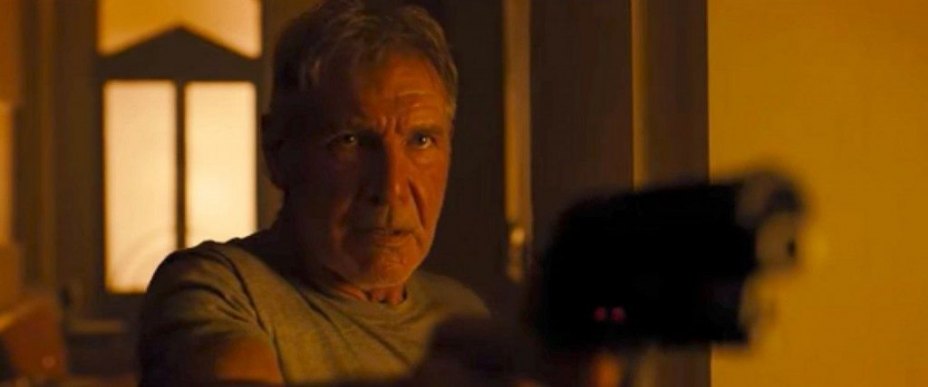
Now, this has been the burning question of the entire original movie for like three decades. Is Rick Deckard a replicant? Director Ridley Scott thinks so and Harrison Ford at a point of time thought otherwise. But the screenwriters intended him to be a human being and that book on which it is based on ‘Do Androids dream of Electric Sheep?’, the author of that book intended him to a human being too. Going into this film, we expected that they would finally resolve that once and for all. The thing is: they never did.
If we assume Deckard to be a replicant, his and Rachel’s daughter, Dr Ana Stelline represent everything Wallace hopes and nothing Joshi fears, while her usefulness as a figurehead for Freysa’s rebellion become somewhat doubtful. Replicants being able to reproduce among themselves would prove that they truly fit the biological definition of being alive. Would a new generation of replicants be capable of reproducing some people alarm some people as Joshi fears? Maybe. But plenty would see huge benefits to having a replicant population capable of replenishing and expanding as Wallace does.
It’s the mystery of Stelline’s birth that makes her so crucial to Wallace and rebel replicant Freysa. For Freysa, birth is a symbol of hope and proof that replicants are genuinely the equals of humans. For Wallace, it’s the key to limitless expansion for his business, which sells a subservient new model of the replicant, the Nexus 9. In his words, reproduction was “Tyrell’s last secret.” Wallace wants the child, so he can dissect her to reveal Tyrell’s secret to create replicants capable of reproduction. H envies women’s natural ability to create. He intends to breed his obedient Nexus 9 “angels” to colonise planets across the universe.
If Deckard is human and Ana is a human-replicant hybrid, everything changes. Joshi’s fears are well-founded, Wallace is as hopelessly nearsighted as every Frankenstein creator before him, and Freysa without a doubt has the mascot she hoped for. To illustrate this, we need to radicalise the human/replicant situation, which is warranted since replicants are slaves. Stelline would be ample evidence of having being grown from both organic and artificial matter and that she would be definitive proof that there is no difference after all between humans and replicants.
But why does the director Villeneuve chose to leave Deckard’s true nature open to debate? Notice in the film when Deckard drops some of his whisky down on the floor for his dog to sip, K asks, “Is it real?” to which Deckard replies, “I don’t know, ask him.” This probably implies that just how it doesn’t matter whether his dog is real or not, in the same way, it doesn’t really matter whether Deckard’s a replicant or a human. What determines humanity is not whether we’re born through natural/artificial means but through our actions. Maybe all this while, we’ve been asking ourselves the wrong question.
The Ending
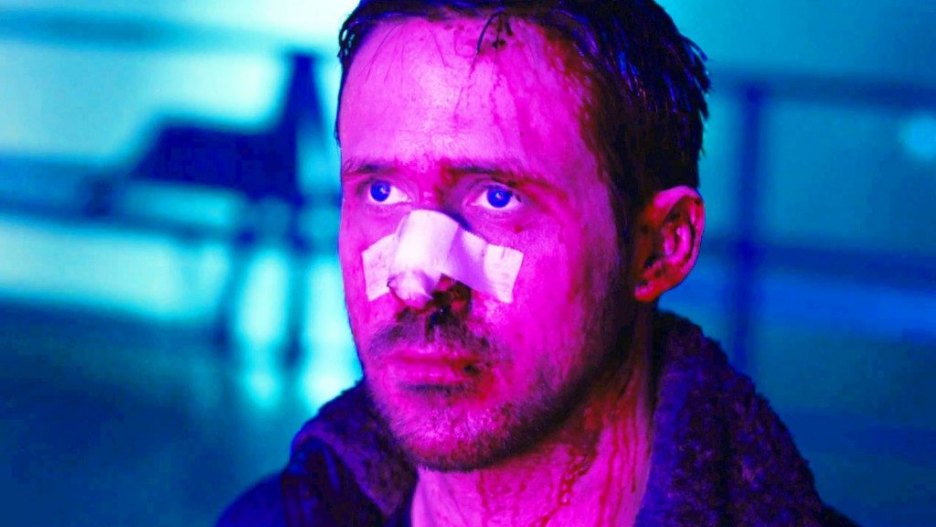
Unlike the ambiguity of Deckard’s identity, K knows that he’s a replicant. The people who inhabit his world are shadows. The LAPD, Wallace’s corporation and a replicant rebellion are three dehumanising forces in conflict: bureaucracy, capitalism and war. Joshi believes in a wall between humankind and replicants and the preservation of order at any cost. She wants the miracle child to be erased. The replicant rebellion wants the child alive, but Freysa wants Deckard dead to keep his identity safe. K is a replicant engineered to obey, “happy scraping the shit because he’s never seen a miracle,” but he becomes that “it” who aspires to be a “he” when he starts to believe that he’s the miracle. K wished that he had a mother and a name. He hoped that he was born and not manufactured.
It’s sad that defending the young girl and her mother ended up getting Sapper Morton killed. If he never saved them, K would’ve never found him and killed him. What seems to kill replicants is humanity. Once Replicants start exhibiting human emotions and feelings, it’s mainly their downfall. Roy Batty and his gang from the prequel begin to feel arguably the strongest human emotions aside from love, the fear of death. And that leads to both Leon and Priss being killed. Sapper Morton felt empathy and compassion which caused him to show up on Officer K’s radar, which got him killed. And when K begins to view himself as not a thing, but as something alive; he felt love for his holographic girlfriend, Joi. With these emotions and feelings he develops, he chooses to sacrifice himself to save Deckard and reunite him with his daughter. When replicants begin to feel, they sign their death certificate.
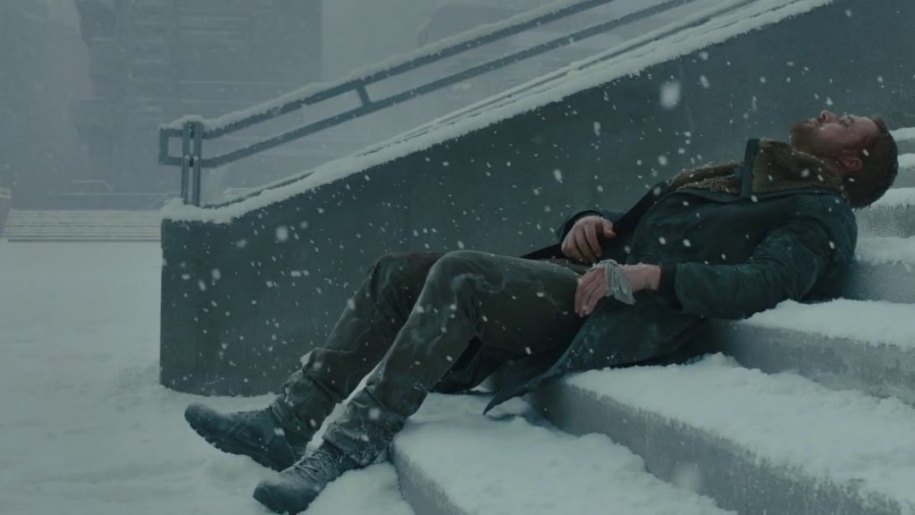
K realizes this whole time that he always had a soul and that everything he did while he thought he was this “child”, that was just him. “Dying for a cause is the most human thing to do”, which is exactly what he does. But this not only alludes him but to Joi too. She risked her life to help him and died because of it. He realises that she is real, becomes his “miracle” just like Sapper said which gives him a reason to believe that he too is real after all. He then uses this freedom to go against what he’s told and free Deckard, thereby reuniting with his daughter and then dying peacefully just like Roy. Since he proves to himself that he was always real, he lets the snow land on him, just like how Joi when she discovered she was real. He is thereby real and free.
K dies for love, but it’s not his own – it’s for the love of a father and a child who are almost near-strangers to him. He knows he isn’t the chosen one yet helps Deckard meet Stelline. Regardless, in a pale echo of Roy Batty’s death in that mesmerizing Tears in the rain sequence, he dies alone without any monologue. K rejects Wallace’s idea of a replicant as a “product”, he rejects Freysa’s commitment to war between species, and he rejects Joshi’s notion that there’s a “wall” between beings. Joshi tells K, “We’re all looking out for what’s real.” And what’s real to K is love.
Read More in Explainers: Blade Runner | Interstellar | Inception

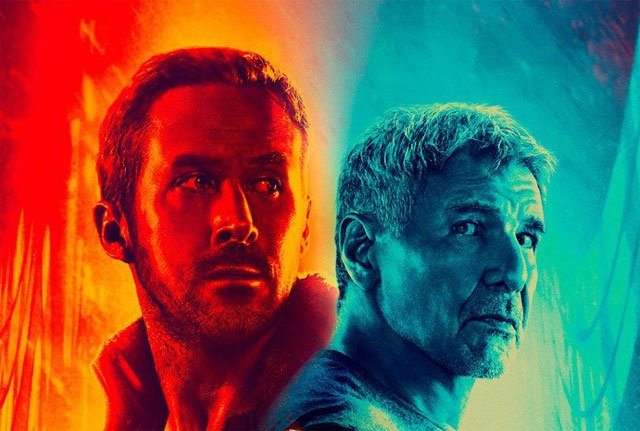
You must be logged in to post a comment.